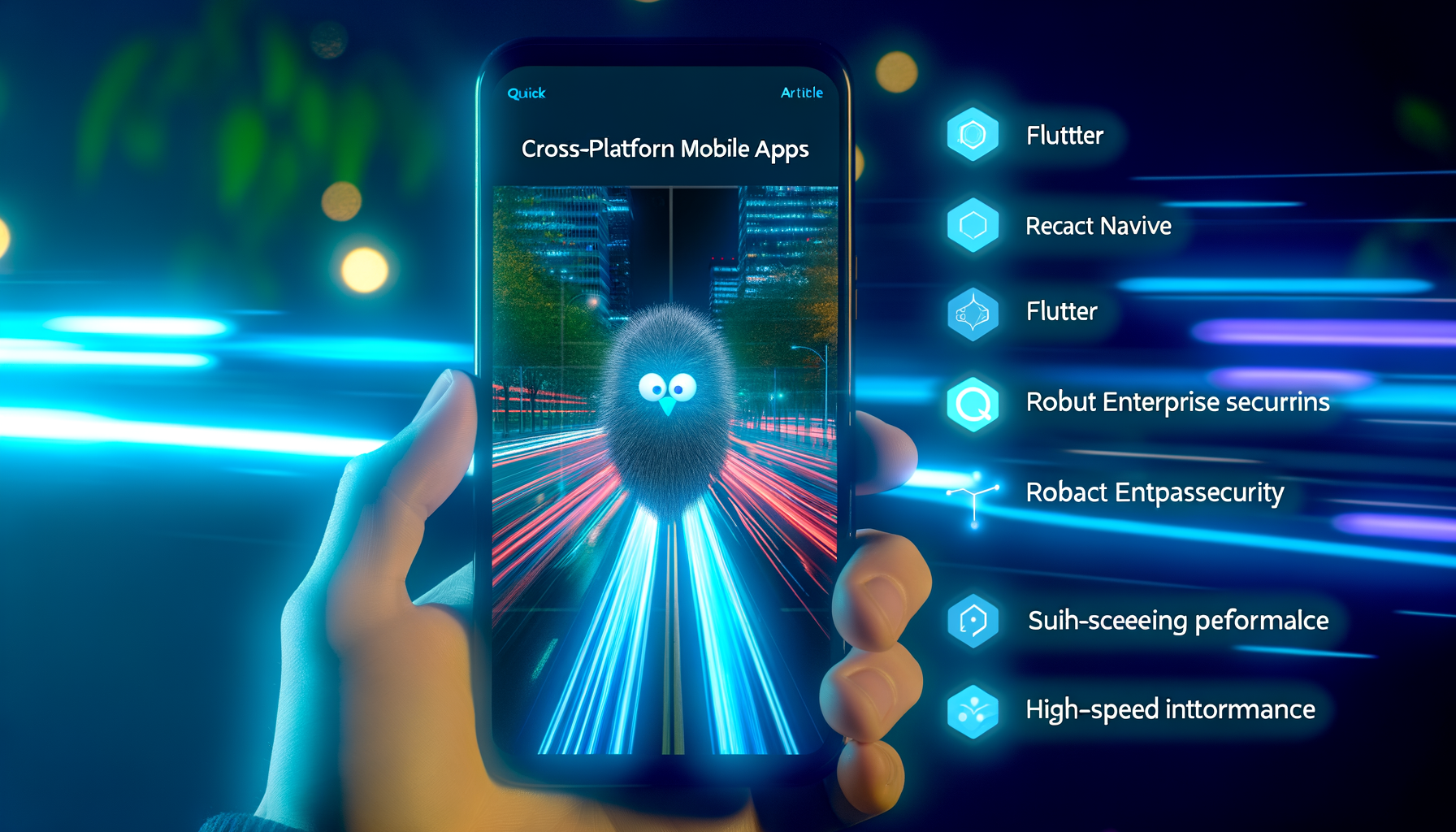In today's hyper-connected world, mobile apps are no longer a luxury; they're a necessity for businesses aiming to remain competitive. Yet, developing separate apps for iOS and Android can be both costly and time-consuming. Enter cross-platform mobile app development—a strategy that allows you to build once and deploy everywhere. With frameworks like Flutter and React Native, and enhanced by AI integration, businesses can significantly cut development time and costs while delivering a seamless user experience across devices. Let's dive into the future-proof strategies that can elevate your digital transformation journey.
Why Cross-Platform Mobile Apps?

App development team discussing strategy with code snippets on a screen.
Cross-platform mobile apps offer a unified solution for businesses aiming to maximize reach without multiplying development efforts. By leveraging a single codebase, companies can simultaneously target iOS and Android users, cutting down on costs and ensuring consistent performance across platforms.
A case in point is the success of apps like Airbnb, which adopted React Native to streamline their development process. This approach reduced Airbnb's engineering workload and improved app maintenance, proving that cross-platform solutions are not just viable but advantageous.
Moreover, the Pacific Northwest, with its burgeoning tech scene, is witnessing a surge in demand for cross-platform apps. Local businesses are increasingly turning to Quicklook for bespoke app solutions that align with their growth objectives.
LIST
- •Unified development
- •Cost-effective
- •Consistent performance
Top Frameworks for 2025

Side-by-side comparison chart of Flutter and React Native features.
As we look to 2025, two frameworks stand out for cross-platform development: Flutter and React Native. Both offer robust tools to create native-like apps without the native cost.
Flutter, backed by Google, offers a rich set of pre-designed widgets, enabling highly customizable UI designs. Its 'hot reload' feature speeds up development by allowing teams to see changes instantly.
React Native, supported by Facebook, excels in delivering high-performance apps and is favored for its extensive community support, making troubleshooting and scaling a breeze.
CALLOUT
Choose Flutter for rapid UI development. Opt for React Native for scalable performance.
AI Integration in Mobile Apps

Illustration of AI-driven mobile app interactions.
Integrating AI into mobile apps can transform user experiences by providing personalized content, enhancing security with biometric authentication, and improving engagement through predictive analytics.
For instance, Quicklook's AI-powered solutions enable businesses to harness machine learning for user behavior analysis, offering tailored recommendations and boosting customer satisfaction.
AI chatbots, integrated within apps, streamline customer service, providing instant responses and freeing up human resources for complex queries.
QUOTE
AI integration isn't just about adding features; it's about redefining how users interact with your brand.
Benefits of Progressive Web Apps (PWAs)

Diagram of PWA architecture showing seamless web-app integration.
Progressive Web Apps (PWAs) offer a hybrid solution for businesses seeking the advantages of both web and mobile apps. They are cost-effective, require less storage space, and can be accessed through any browser without download.
PWAs are particularly beneficial for businesses with budget constraints, as they eliminate the need for separate app stores entries, reducing both development and maintenance costs.
Moreover, PWAs perform exceptionally well in offline environments, ensuring uninterrupted access to content—a crucial feature for users in areas with unstable internet connectivity.
LIST
- •Cost-effective
- •No downloads needed
- •Offline functionality
Future-Proofing with 5G Technology

Graphic showing 5G network nodes connecting mobile devices.
The roll-out of 5G technology is set to revolutionize mobile app development by offering unprecedented speed and connectivity, facilitating richer user experiences and more complex functionalities.
5G's low latency and high bandwidth capabilities mean apps can handle more data-intensive processes, such as augmented reality (AR) and virtual reality (VR), in real-time.
For businesses, this translates to apps that are not only faster but also capable of delivering immersive, engaging experiences that were previously impossible on mobile networks.
CALLOUT
5G is not just faster internet; it's the key to unlocking next-gen app features.
Frequently Asked Questions
QWhat are the top cross-platform mobile app development frameworks in 2025?
QHow does AI integration enhance cross-platform mobile applications?
QWhat are the benefits of using Progressive Web Apps (PWAs) for cross-platform development?
Conclusion
Cross-platform mobile app development presents a strategic avenue for businesses to expand their reach efficiently across iOS and Android. By employing top frameworks like Flutter and React Native, integrating AI, and leveraging PWAs, companies can ensure a competitive edge in the digital landscape.
Future Vision
As 5G technology continues to evolve, the potential for mobile apps will only expand, offering richer, faster, and more immersive experiences.
Schedule your AI audit with Quicklook.
